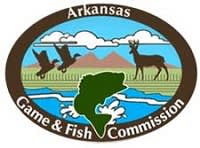Food Plots Out-perform Corn Feeders for Arkansas Deer Hunters
Arkansas Game and Fish Commission 08.22.13

Like elevated stands, corn feeders are now prevalent in Arkansas deer hunting.
There is a better way, according to wildlife biologists with the Arkansas Game and Fish Commission – food plots with a variety of plantings.
Ralph Meeker, AGFC’s assistant deer program coordinator, says hunters can more effectively improve nutrition (for deer) by planting stuff in the ground instead of pouring it out of a bag. “One factor is that an assortment of plantings can provide supplemental food for deer virtually year round. Feeders with supplemental feed or corn can be used all year as well, but this approach isn’t near as nutritional or cost effective,” he explained.
Another downside to using feeders is that they are not a natural option for deer that are out looking for food. Deer are selective feeders, not livestock. Deer take a few bites here, move on and take some more bites there. “The average deer eats about seven pounds of food a day, but deer don’t stand and eat all seven pounds at a feeder,” Meeker noted. “Nearly 75 percent of their diet is still dependent on vegetation. As a result, the vegetation they eat makes much more of an impact on their nutrition than what they receive from a feeder.”
Other downsides to feeders are that they attract several other unwanted wildlife species, such as raccoons, feral hogs, coyotes and bobcats. Also, due to a feeder’s ability to concentrate wildlife, the likelihood of disease transmission also is increased. Add to that some corn may contain high levels of a toxic compound known as aflatoxin, which is produced by a fungus that infects grains grown under droughty, stressful conditions.
Deer feeding is popular, Meeker says. “A 2011 survey of several Arkansas deer clubs showed that 89 percent of them fed deer and 96 percent of these used corn,” Meeker said. “The common perception is that feeders attract big bucks. Research has shown that baiting can actually decrease the chances of a hunter being able to successfully harvest a deer. This is because deer begin to visit feeders more at night rather during the day,” he added.
With plantings in food plots, deer hunters and club managers can give deer a wide variety of high quality food sources ranging from soy beans and varieties of peas to clover and brassicas (turnip, kale and rape). “As much as 10,000 pounds per acre with a protein content of more of 25 percent and at a cost of about 3 cents per acre,” Meeker said.
Meeker also strongly suggests that hunters should test their soil before planting a food plot. This will tell how much lime and fertilizer will be needed to get the most growth out of plantings. Soil samples can be taken to the local county extension office and a free analysis will be sent by mail in a couple of weeks.

